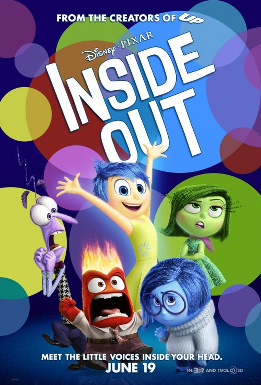With a fully realized world, a stellar voice cast and an abundance of heart, Pixar may have delivered its best movie yet with Inside Out.
The film is a bold leap forward for the studio, explicitly examining the psychology of its audience in an incredibly creative way. In this world, there are five main emotions working in your brain "“ Joy, Sadness, Disgust, Anger and Fear "“ and their prodding makes your memories and, in turn, crafts your personality.
Amy Poehler voices Joy, the most dominant emotion inside 12-year-old Riley (Kaitlyn Dias), whose life is upended when her family moves with her mom and dad from rural Minnesota to the dodgy side of San Francisco. But between puberty and the move, Sadness (The Office's Phyllis Smith) has started to take over.
It's a simple story, but as Pixar has proven time and again, it's used as a springboard for an abundance of creative ideas. Navigating the vast wilderness of the mind, Joy and Sadness run into a clean-up crew that eliminates some knowledge (like piano lessons) and keeps some others (like annoying commercial jingles). They also sneak into the studio responsible for dreams (like Something's Chasing Me! and I'm Flying).
Pixar has gained a reputation for forcing its audience into the fetal position, especially after its three-peat of WALL-E, Up and Toy Story 3. But the creators always have the best of intentions, and all the tears you might shed come from real places, even if they're unlikely. Indeed, some of the strongest impulses to weep openly will come from Bing Bong, Riley's long-forgotten imaginary friend voiced by Richard Kind.
But I don't want to sell Inside Out short. To be sure, it's often very funny, especially given the comic talents of Mindy Kaling (Disgust), Bill Hader (Fear) and Lewis Black (Anger). The few trips inside the minds of the other characters prove just how many different directions they could have taken this thing.
There's beauty and care in every scene of this remarkable film. It's early yet, but the rest of 2015 is going to have a difficult time keeping up with the craft and emotion of Pixar's latest masterpiece.

